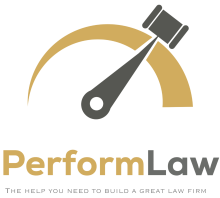Leveraging work within law firms is a classic profit-building strategy. The idea is straightforward: an attorney focuses on acquiring new clients and handling more complex, higher-paying cases while delegating lower-rate tasks to paralegals or junior attorneys.
While the leveraged work is billed at a lower rate, the expense of production is also ostensibly lower because the junior attorney or paralegal is paid less. As a result, the firm’s profit margin should remain stable or improve. This strategy is hardly a secret and is something most law firm managers are introduced to early in their careers. However, what happens when the reality doesn't match the theory?
Breaking Even – or Worse
The main issue arises when the firm fails to accurately predict the cost of production. The paralegal can be more profitable at many firms, especially if s/he is billing a lot of hours at a healthy rate. However, several factors can complicate this equation. Is the client paying on time? Is the total collected fees enough to cover the paralegal’s payroll, benefits, and overhead? Overhead can look very different depending on the firm. High facility or marketing costs can bring up the overhead and thereby reduce the profitability of the paralegal’s work.
“Cannibalized” Work
Another potential pitfall occurs when the leveraging attorney fails to adequately replace or “backfill” the work with high-value tasks. For instance, a partner might give away high-value billable hours to a paralegal or junior associate, expecting to make up for it by taking on more lucrative work. But what if those higher-value hours never come? Naturally, either the firm already has plenty of this work and the partner needs to focus more time on it, or the partner needs to attract additional clients to generate more lucrative work. If these things do not happen, the partner has simply given away hours to be billed at a lower rate. The firm pays to keep the partner and the leveraged associate, but now it generates less total fees. In data terms, perhaps its average rate is down, its total billed hours are down, or both.
Are You a Paralegal Firm?
- Is the firm’s overall average or effective hourly rate looking lower than expected?
- Are the average billed hours per paralegal higher than that per associate or partner?
- Is there more than one paralegal for every attorney?
- Are certain clients less profitable than expected?
- Do clients primarily communicate with paralegals?
- Do paralegals handle the majority of the intake and legal document drafting?
You’re Not Alone
It is common for firms to be vulnerable to wasteful leveraging. As a result, firms might make less profit than they could on certain clients, senior attorneys, associates, paralegals, or all of the above.
A Profitable Paralegal Firm is Possible
While the pitfalls of hyper-leveraging are real, it can be a legitimate strategy when properly handled. The warning signs in the above list could indicate over-leveraging, but it does not have to result in these negative conditions. There are more strategic ways to cultivate a thriving paralegal firm – one where the paralegals may even bring in the highest margins.
If a firm chooses to leverage heavily, it should do so intentionally. Proper planning is the name of the game. It begins with accurate calculations of overhead contributions for each individual, followed by profitability analysis and the development of predictive financial models.




 i
i


